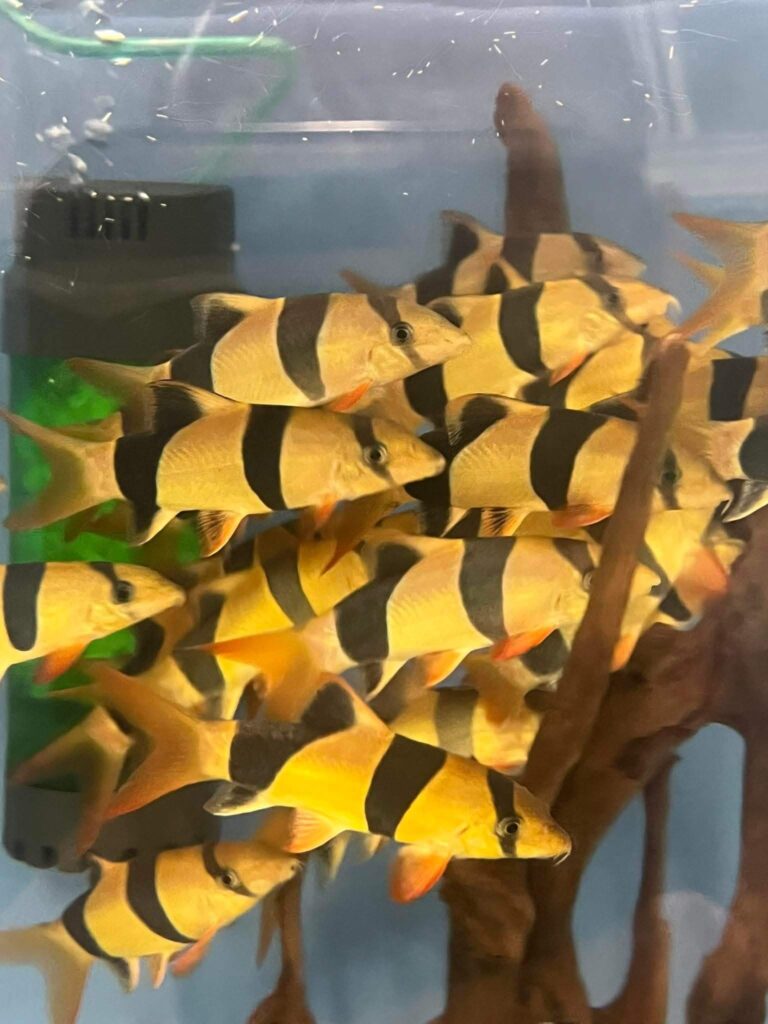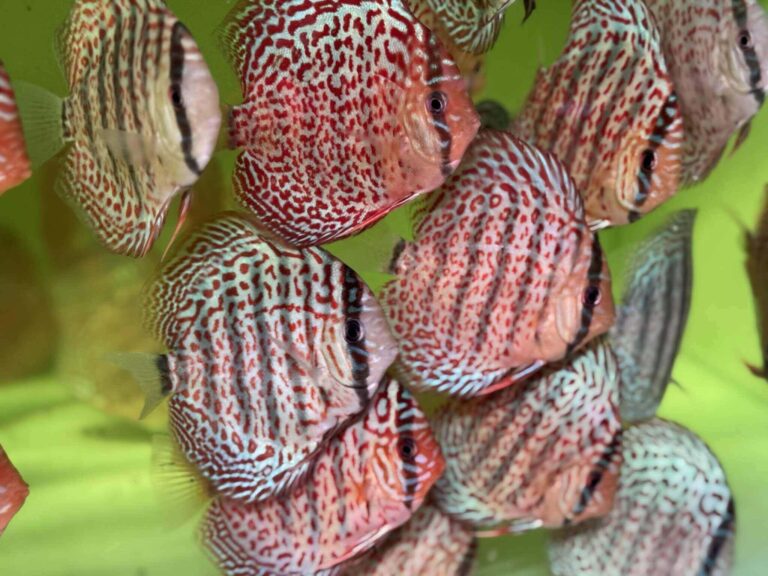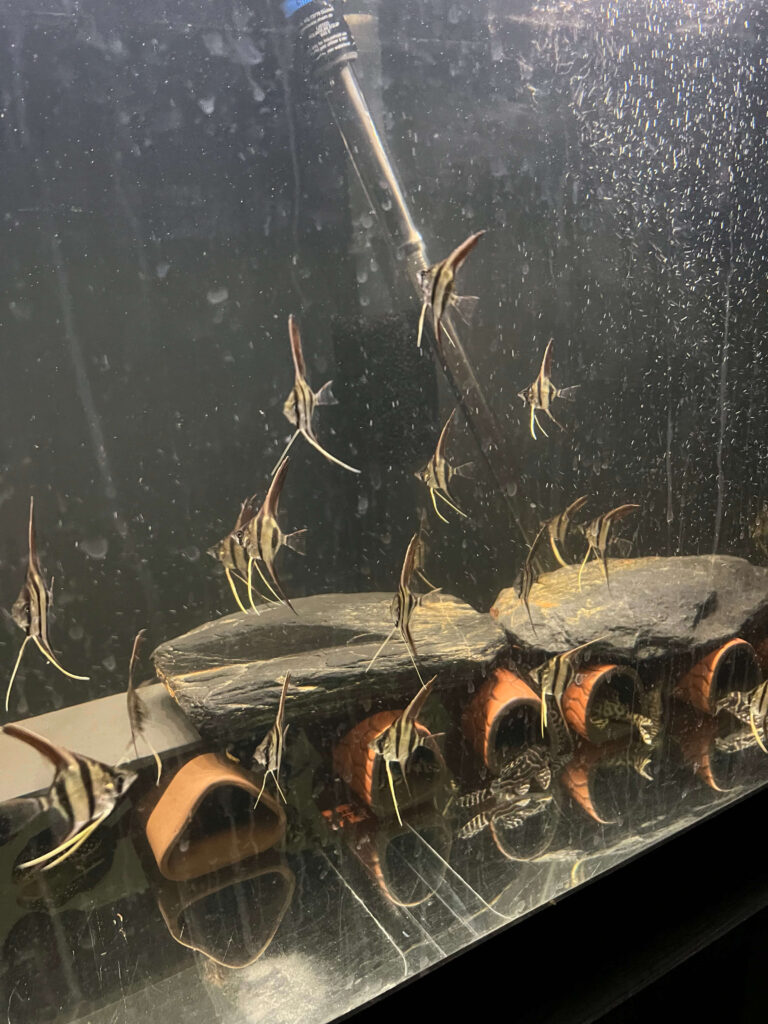Infor
Gallery
Description
Gallery



Description
The NTT Datnoid, or Datnioides undecimradiatus, is a striking and impressive freshwater fish species native to Southeast Asia, specifically the Mekong basin in Northeastern Thailand, Laos, and parts of Cambodia. They are also known as Thinbar Datnoids due to their thinner, distinctive vertical black stripes over a silvery-grey to bronze body. While captivating with their tiger-like appearance, NTT Datnoids require a specialized setup and diligent care to thrive in a home aquarium.
Here’s a guide to providing optimal care for your NTT Datnoid:
Tank requirements
Size: These fish grow quite large, reaching up to 14-18 inches (35-45 cm), with some sources indicating up to 24 inches (60 cm) in the wild. A minimum of 120 gallons is recommended for juveniles, but a tank of 180 gallons or larger is ideal for adults to provide ample swimming space and accommodate their territorial nature.
Environment: Mimic their natural habitat by providing plenty of hiding spots and visual barriers using driftwood, rocks, and sturdy plants like Anubias or Java Fern. They appreciate subdued lighting, which can be achieved with floating plants or dimmer lights.
Substrate: A soft substrate like sand or fine gravel is best to protect their delicate barbels.
Water Flow: NTT Datnoids prefer moderate water flow. Choose a filtration system that provides good circulation without creating strong currents that can stress the fish.
Filtration: These fish are messy eaters and produce a lot of waste, requiring a robust filtration system to maintain excellent water quality. High-quality canister filters or sump systems are highly recommended.
Water parameters
Temperature: Maintain a stable water temperature between 75-82°F (24-28°C). Some sources suggest a slightly wider range of 68 to the low 80s, but maintaining a stable temperature is key.
pH Level: NTT Datnoids thrive in a slightly acidic to neutral pH range of 6.0-7.5.
Water Hardness: Soft to moderately hard water is preferred (2-15 dGH), with a general hardness (GH) of 5-12 dGH being ideal. Brackish water is not essential, but they can tolerate slightly brackish conditions if needed.
Water Quality: High water quality is paramount. Regular water changes (at least 25% weekly) are essential to remove accumulated waste and maintain stable parameters.
Diet and feeding
Carnivorous: NTT Datnoids are carnivores and predators, primarily feeding on live prey in the wild.
High-Protein Diet: In captivity, they should be offered a variety of high-quality sinking pellets or sticks designed for carnivorous fish. Supplement their diet with live or frozen meaty foods like shrimp, krill, small fish (e.g., feeder fish or silversides), and worms (e.g., bloodworms, earthworms).
Live Food Caution: While they may initially prefer live foods, it’s recommended to wean them onto frozen or prepared foods to minimize the risk of introducing diseases from live feeders. If using live feeder fish, ensure they are from a trusted source and consider quarantining them before introducing them to the main tank.
Feeding Frequency: Feed them once or twice daily, providing only what they can consume within a short period to prevent overfeeding and maintain water quality.
Compatibility and temperament
Semi-Aggressive and Territorial: NTT Datnoids are considered semi-aggressive and territorial, especially towards other bottom-dwelling fish or others of their own species, particularly as they mature.
Suitable Tank Mates: Choose tank mates carefully, opting for larger, robust fish that can withstand their predatory nature and occupy different areas of the tank. Suitable tank mates include Silver Arowanas, larger Cichlids (like Oscars or Severums), large catfish species (like Plecos or Bichirs), and Silver Dollars.
Avoid: Do not house them with smaller fish that could be viewed as prey, nor with aggressive or fin-nipping species.
Groups: While NTT Datnoids are solitary, it’s sometimes possible to keep multiple Datnoids together in exceptionally large tanks with ample hiding spots and territories, though territorial disputes can still occur.
Lifespan
8-15 Years: With proper care and a suitable environment, NTT Datnoids can live for 8-10 years, and potentially longer, reaching up to 15 years or more in some cases.
Breeding
Challenging in Captivity: Breeding NTT Datnoids in captivity is extremely challenging and rarely achieved in home aquariums due to their specific environmental and behavioral requirements. They are egg scatterers in the wild, and successful breeding likely requires replicating precise conditions found in their natural habitat.
Note: NTT Datnoids are considered an advanced species, requiring a dedicated aquarist due to their size, carnivorous diet, and specific water quality requirements. Thorough research and a well-planned aquarium setup are essential for their health and well-being.
New Product
- 40$
- 15$
- 40$





